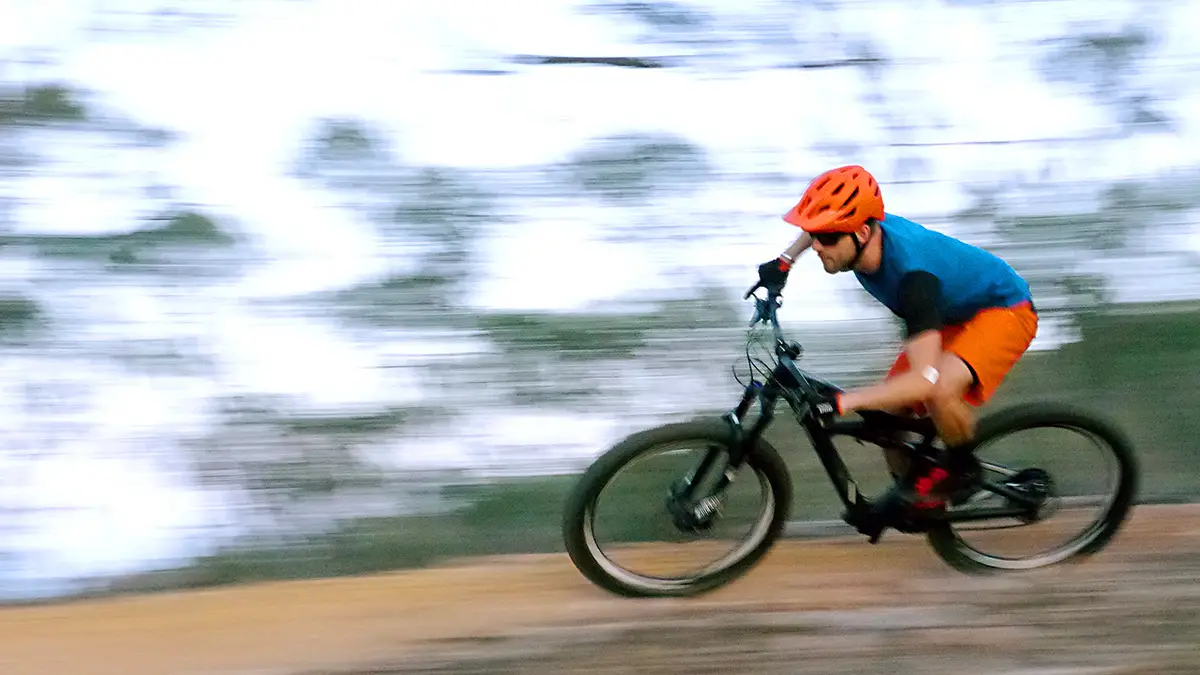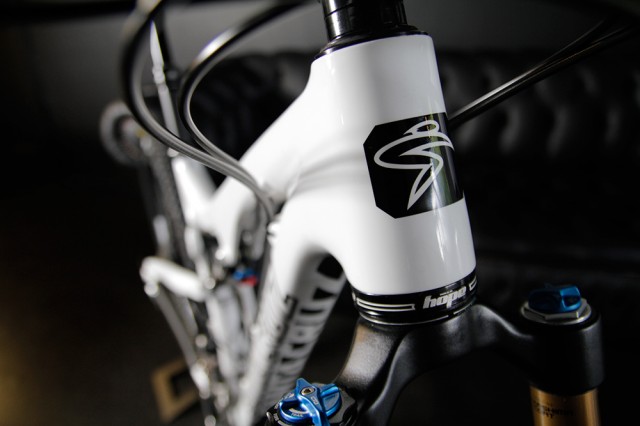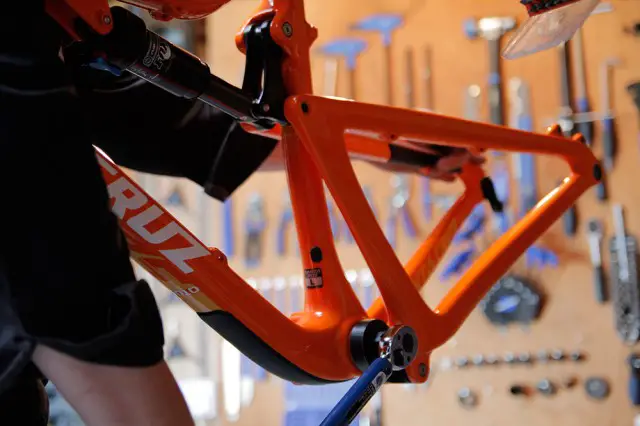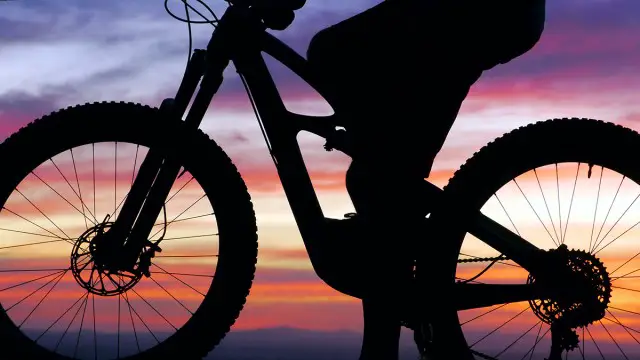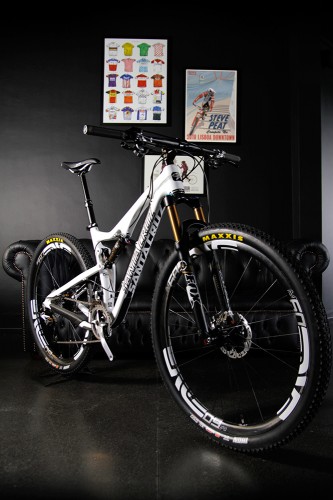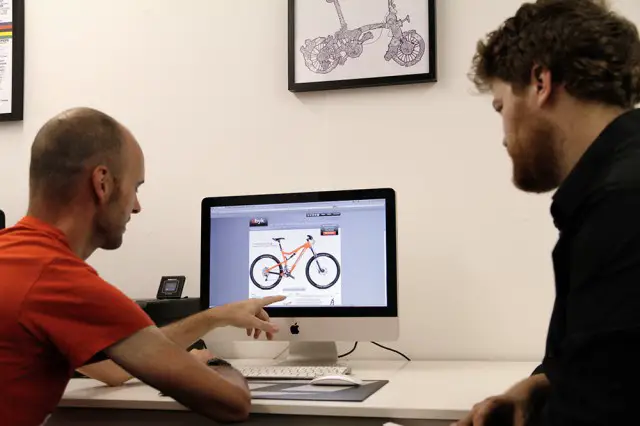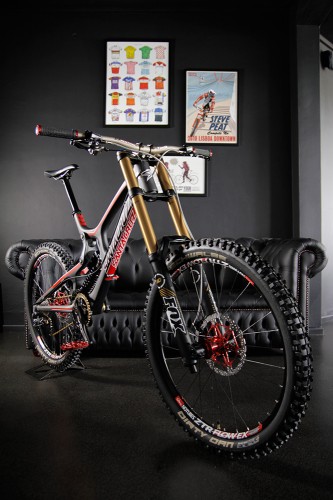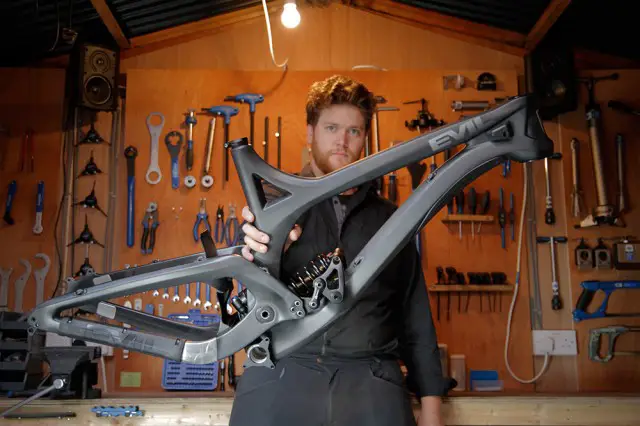By Wil Barrett
If 2015 was the year of the enduro Bike, 2016 is shaping up to be the year of the trail bike.
As the hype around the enduro scene begins to stabilise somewhat, we’re starting to see a bit of a trend emerge. While many riders have gotten fired up about the idea of enduro bikes, more and more of those riders are now beginning to realise that they might not necessarily need a Fox 36 and 7” of travel out back to ride their regular trails.
And really – lets be honest here – have you ever been pedalling around on your 150mm travel All Mountain sled and wondered if you’re actually riding it to its full potential? Have you ever thought to yourself that maybe there is indeed such a thing as too much bike?
Today’s modern trail bikes can now offer much of the same high-speed capability in a lighter, snappier and more efficient package
Those sorts of slacked-out machines are perfect for the alpine territory they’re designed for, but on the sort of everyday trails that most of us frequent, these enduro specialty bikes can be a little ‘cumbersome’, and somewhat overkill.
And while enduro has without doubt been responsible for pushing the development of frame, suspension and component technology over the past few years, those same advancements are now trickling down into smaller-travel machines too. Today’s modern trail bikes can now offer much of the same high-speed capability in a lighter, snappier and more efficient package.
Case in point is the brand new Mojo 3 from Ibis.
As a shrunken-down version of the venerable HD3, the new Mojo 3 fuses together slack big-bike geometry with a lightweight carbon frameset and 130mm of efficient dw-link suspension. The result is a lighter and more nimble trail ripper, and a bike that is likely to better suit the needs of the masses.
But while it sure looks pretty and it sure sounds good on paper, is the Mojo 3 everything that Ibis says its cracked up to be?
Initial Impressions
When I first got my hands on our Mojo 3 test bike, the first thing I thought was just how much it looks like the HD3. While the Mojo 3 has 20mm less travel on the back, with it’s low-slung frame, RockShox PIKE fork, and huge 2.8” wide tyres, it looks every bit as brawny and as capable as its bigger brother.
That said, the bike is built accordingly. If you swapped in a Fox 34, a lower profile wheelset and skinnier 2.2” wide tyres, I’m sure the Mojo 3 would take on a far more svelte appearance.
After getting over the looks, the second thought I had was something along the lines of “how good are trail bikes these days?” With a KS LEV Integra dropper post, over 5” of suspension front and rear along with fat tubeless tyres, the Mojo 3 is a terrific example of a modern trail bike. The fact that it weighs just 12.26kg out of the box (without pedals) makes it all the more impressive.
Geometry
As is the case with modern trail bikes, the evolution of the Mojo platform over the years has seen the 3rd generation frame get longer, lower to the ground and slacker. The head angle is kicked way back at 66.8-degrees, and the Medium sized test bike I’ve been riding runs a 60cm top tube length. This gives the bike a nice long front centre for excellent stability and control.
With a 50mm long stem and 760mm wide carbon handlebars, I immediately felt comfortable aboard the Mojo 3. The riding position is comfortably upright, which is also due to the steeper 73.6-degree seat tube angle that pushes your weight over the bottom bracket.
Once aboard the Mojo 3, the bike offers a substantial feel underfoot. It’s kinda like when you first slip on your hiking boots after wearing flip-flops all day long. There’s an added feeling of safety and confidence, yet the familiarity of being on a trail bike is still there.
The front wheel does pushed a good deal out in front of you, but it never feels unmanageable, which I put down to the quick steering from the short stem. It also has a lot to do with the short 425mm chainstay length that tucks the rear wheel right up against the seat tube. With the saddle compressed and your weight driving down into the pedals, the Mojo 3 can be happily steered off the back wheel. It’s here where that short rear-centre and 27.5” diameter wheels will happily carve a controlled arc around the tightest switchback turns.
Suspension
It took a little while to dial in the suspension on the Mojo 3, which I largely attributed to the 2.8” wide Schwalbe Nobby Nics that came on our test bike. The bigger tyres act as suspension on their own, and as such, they have a habit of muting the transition between tyre compression and suspension compression. This just makes it a little more time-consuming to ascertain rebound and compression settings on the fork and shock.
Over the first week of riding, I gradually lowered the spring pressure in the fork, while increasing it on the rear shock. For my 65kg riding weight, I eventually settled on 67psi in the fork, with the low-speed compression dial set 3-4 clicks in from full open.
For the Fox rear shock, Ibis recommend using 25-30% sag. That’s 13-15mm sag for the 51mm stroke shock. I initially began testing with 150psi to put me at the softer end of the range, but after using all the travel on multiple occasions with a noticeable (but soft) bottom-out, I bumped up the pressure by 5psi each following ride. Eventually I reached a sweet spot at 175psi, which provided sufficient bottom-out resistance. This put me closer to 25% sag, and here the bike felt a little more stable under pedalling inputs, while also reducing the many pedal strikes I encountered initially.
At this setting however, I felt that the EVOL rear shock wasn’t quite as supple as I was expecting. After probing further, it turns out that Ibis spent a significant amount of time working with Fox during the Mojo 3’s development, which included testing various spring rates by adding and removing volume spacers inside the positive and negative air springs for the FLOAT rear shock. The idea was to get the ideal spring curve to match the dw-link suspension.
The stock setting they settled on utilises no spacers inside the positive spring, and six spacers inside the negative spring. This creates a nicely linear feel to the rear suspension with good mid-stroke support, but in my opinion, it also means you miss out on some of the early-stroke suppleness from the EVOL air can. This is definitely more noticeable with regular 2.3” wide tyres though, as the bigger 2.8” tyres typically take care of small-bump control.
Ideally if I had more time with the Mojo 3, I’d like to experiment with reducing some of the spacers inside the negative spring to increase its volume, and therefore its willingness to get into the travel. Next time Gadget, next time.
With help from Fox, Ibis also developed an additional shock tune that is available as a no-cost option on the Mojo 3 at the time of purchase. This is called the ‘Roxy Tune’, and is named after one of Ibis Cycles owners Roxy Lo. Developed for riders who weigh under 55kg, this lighter tune avoids the shock from feeling over-damped when run at lower air pressures.
While I was getting the spring pressure dialled in, I also played around with rebound damping. Because of those big 2.8” tyres, it’s necessary to add a couple of clicks to the rebound dial to help manage this additional un-damped suspension. With the rear shock on the slower side, the tyres are free to do their thing and keep you glued to the trail surface.
Oh and for those who hate suspension, there’s a blue lever on the rear shock that allows you to turn it off. I don’t recommend using it. The Mojo 3 pedals remarkably well in the full-open setting, and you’ll be able to enjoy it’s smooth suspension feel on all of those occasions where you would forget to flick the dial back.
Fat Tyres
So…plus tyres. Let’s talk about it.
Firstly, I must admit I haven’t had a lot of experience with full-suspension plus bikes, so the Mojo 3 was a superb opportunity to get properly acquainted with the semi-fat brigade.
As you would rightly expect, there is a metric shit-tonne of traction with a 2.8” wide tyre. The Nobby Nic’s offer an insane amount of grip on a wide variety of trail surfaces that make you feel like you can’t put a foot wrong. Of course you can still break traction and get them drifting, but that point is beyond anything else I’ve ridden before. Within a few rides, I was totally addicted to the monster traction on offer, and I was able to maintain more speed through the turns where fellow riders were on the anchors.
The additional damping and footprint that comes with the 2.8” tyres also delivers a huge confidence booster when facing steep, rooty and rocky descents. Much like a long-travel 29er does, the Mojo 3 encourages you to monster truck through the chunder with very little concern for consequences. The toothy tread pattern on the Nobby Nic tyres works well at scrabbling for traction in these loose conditions, while the rounded casing profile makes them surprisingly easy to lean over from side-to-side, with good support from the shoulder tread.
There is definitely more effort required at the pedals to keep the bike moving forward though, and that’s simply down to there being more rubber on the ground. The big footprint takes some of the edge off the Mojo 3’s lively handling, and the added sag from the tyres does reduce some ‘spring’ and the bikes willingness to take to the air. It’s not necessarily a bad thing, it just means you stay glued to the ground more frequently.
Tyre pressure on any mountain bike is crucial to achieve optimal performance, but it’s even more crucial-er on a plus bike. In my experience, the difference between 16 and 17psi was noticeable. At 16psi, the rear tyre would get squirrelly in the type of corners where you’re driving your full weight into the bike. At 17psi, the necessary stability (and confidence) returned.
Like the suspension, it took a few rides to get the tyres setup for my rocky local trails. The sweet spot for me ended up being 15psi up front, and 17psi out back. On that note, (whether you’ve got a plus bike or not) make sure you get yourself a high quality digital tyre gauge so you can accurately measure and adjust tyre pressures. The difference in performance is worth the setup time.
While all of that is well and good though, as many testers have already pointed out, the current elephant in the room with plus tyres is durability.
Each Schwalbe Nobby Nic 2.8” tyre weighed in at 870 grams on my digital scales. That is insanely light for such a wide tyre, though when you feel the sidewalls between your fingers, you can see how Schwalbe have gotten these tyres so trim. As a result, punctures were common, even with the tubeless setup. And within just two weeks of testing, the rear tyre was toast.
I should point out that I have destroyed many a tyre and rim on my local trails, where sharp imbedded rocks have a habit of eating up anything that lands on them at an uncooperative angle. But it was the frequency of punctures with the 2.8” Nobby Nics that alarmed me, and especially given that I began to ride more tentatively with higher pressures to reduce the chance of a mid-ride deflation.
As I see it, the problem for tyre manufacturers and bike companies is that if plus tyres were built with the same construction as a regular 2.3” tyre, they would be well over a kilo each. And as many of you will know, there is no better way to kill a bike’s agility than by fitting super heavy tyres. Can you imagine if Ibis sent us a Mojo 3 test bike with tyres that weighed as much as a 2-ply downhill tyre?
I’m not entirely sure what the answer is moving forward, though we’ll need to see some significant advancements in the type of materials and construction methods used for laying up tyre casings before the durability of plus tyres is up to what a hard-hitting trail rider requires.
As it stands, they do offer gob-loads of traction on loose surfaces and lots of added confidence for getting rowdy on technical trails. But be warned: if the majority of your riding involves frequenting mud or sharp tyre-eating rocks, plus tyres might not be the answer for you.
[fbvideo link=”https://business.facebook.com/singletrackmag/videos/10153654867778612/” width=”650″ height=”400″ onlyvideo=”0″]
Can’t see the video? Click here
Skinny Tyres
Of course it’s pretty obvious that tyres are very much condition specific. Like shoes, you change them depending on what lies ahead for the day. Regardless of what width you’re running, the ideal tread pattern and construction will largely be determined by your weight, riding style and trail surface.
With that in mind, halfway through the test period I removed the Nobby Nics and fitted on a Specialized tyre combo with a 2.3” Butcher up front and a 2.3” Slaughter out back. Both tyres use the 2Bliss Control casing and come in at 750 grams each.
The change in ride quality was immediate, and all of a sudden, the Mojo 3 turned into the bike that I had expected it to be. Acceleration improved, and I found that there was noticeably less effort at the pedals required to keep the bike ticking over at speed.
With lighter and skinnier tyres fitted, the Mojo 3 feels more agile and more ‘poppy’ on the trail. There’s a greater willingness for it to get airborne, with the bike feeling more enthusiastic front-to-back. The smaller contact patch on the front tyre means there’s less resistance to steering inputs, which was more noticeable the tighter the trail got.
Feeling less like a monster truck and more like a rally car, I was able to uncover the true playfulness in the Mojo 3’s chassis. And holy mackerel, is this a fun bike to shred on!
The downsides of going to the skinnier tyres became apparent the first corner that I nearly crashed on. After having gotten used to the earth-bending grip of the 2.8” Nobby Nics, it took a while to readjust to normal traction levels. I had to tweak my riding style somewhat, and I wasn’t able to blast down the same nasty descents with the same speed and confidence as before.
Like any tyre or component change on a bike, it doesn’t take long for you to work out its strengths and weaknesses, and your riding style soon adapts to suit. What was interesting about the tyre experiment on the Mojo 3 though, is just how different the bike can feel with a different set of shoes on.
Our thoughts so far
As you can probably tell, I had an absolute blast riding the Mojo 3.
It’s a terrific handling bike that packs big-bike geometry into a lighter, snappier and more responsive package that suits a wide variety of trail conditions. It’s a comfortable and intuitive bike to ride, and I’d hazard a guess that the Mojo 3’s broad appeal will see it’s sales eclipse that of the popular HD3.
With adaptability in its wheelsize, the Mojo 3 will happily shift its personality depending on what you want it to do. And best of all, those ride characteristics are only one tyre change away.
In their press release for the new bike, Ibis suggest that the Mojo 3 “may be our most versatile trail bike ever”. I’m sure there’ll be riders out there who disagree with that opinion, but whichever way you look at it, there’s no denying that the new Mojo 3 is a stunning interpretation of the modern all-round trail bike.
Review Info
| Brand: | IBIS |
| Product: | Mojo 3 |
| From: | http://ibis.com |
| Price: | £6249 As Built |
| Tested: | by Wil Barrett for 2 Weeks |
